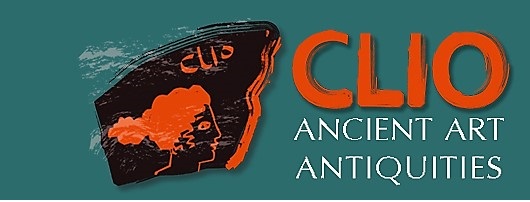At the time of this writing the self-styled Caliphate created by Islamic State six years ago in Syria and Iraq has been reduced to little more than a square mile of bombed out rubble. During IS’ heyday much was made in the western press of a supposed systematic trade in antiquities looted by IS operatives and funneled to western art markets to help fund terror operations. Much like the IS “Caliphate” itself, these claims proved an illusion. Despite many investigative journalism pieces, little tangible evidence ever appeared of any systematic funding of IS or other related groups’ operations through the sale of illicitly acquired antiquities. Initial estimates that the group generated billions of dollars from looted antiquities were quickly walked back as it became apparent those estimates were absurd and captured IS official documents failed to show any evidence that such a trade existed.
Even with the military defeat of IS, broader regional tensions will continue to morph into something new in the months and years ahead. These include the civil war in Syria, continuing tensions in Iraq, Lebanon and Yemen between Shia and Sunni Muslims (fueled by local and global powers), the Kurdish question and several other conflicts. Of course, all of these conflict zones, and many others around the world, have the potential to threaten local cultural heritage resources and result in the looting of antiquities. But in the aftermath of IS, the more specific issues of how to protect cultural resources have still not been addressed. Largely academic and impractical morality-based ideas, and politically attractive legislation based on very little fact, floated by a few groups in the elite cultural heritage industry, have offered no solutions. Basic questions of addressing economic inequality and political repression that drive local people to looting in antiquities-rich nations, usurpation of the archaeological past by many of these states to further their repressive political agendas, the coziness of many in the archaeological community with such regimes and the flawed notion of repatriating antiquities to unstable conflict zones are all issues that remain.
Nearly four years ago I began writing a series of articles dealing specifically with issues surrounding the illicit trade in antiquities and some of the more inflated claims made by those in the cultural heritage industry. The end of IS as a geographic entity has struck me as an ideal time to post these articles again, particularly in light of how little progress has been made in addressing the real issues that drive archaeological looting. I am posting links to all three of those articles here, beginning with the oldest. A title, date of publication and link for each article appears below.
SELLING ARTIFACTS TO SAVE THE PAST. Published March, 2015 – https://clioantiquities.com/2015/03/29/selling-artifacts-to-save-the-past/
MAKING MATTERS WORSE? THE DEBATE OVER “REPATRIATING” ANTIQUITIES TO FAILED STATES IN THE MIDDLE EAST. Published May, 2015 – https://clioantiquities.com/2015/05/15/making-matters-worse-the-debate-over-repatriating-antiquities-to-failed-states-in-the-middle-east/
RATIONAL PROPOSALS FOR SAFEGUARDING ANTIQUITIES – BUT WILL ANYONE ACT?. Published January, 2016 – https://clioantiquities.com/2016/01/02/rational-proposals-for-safeguarding-antiquities-but-will-anyone-act/

